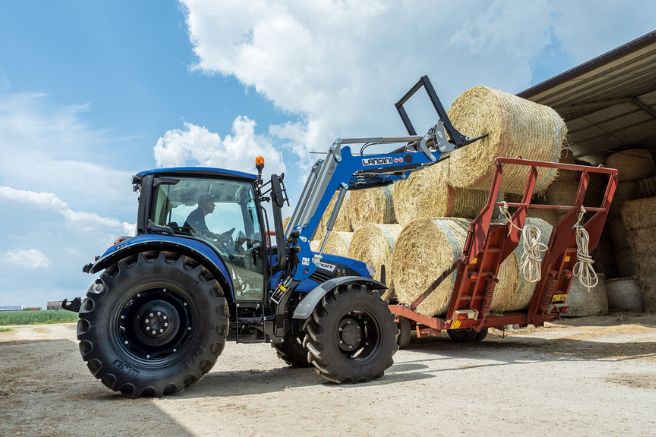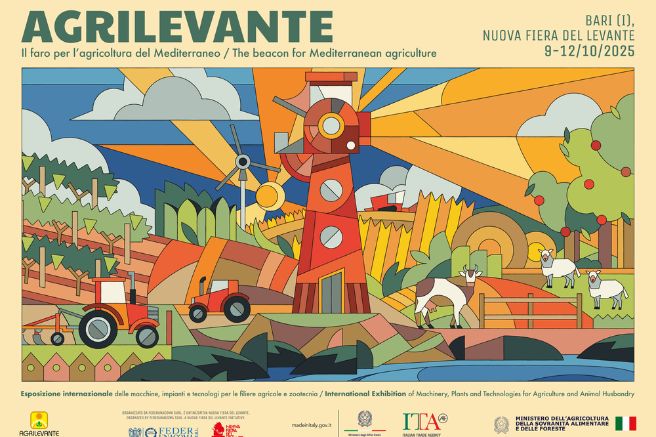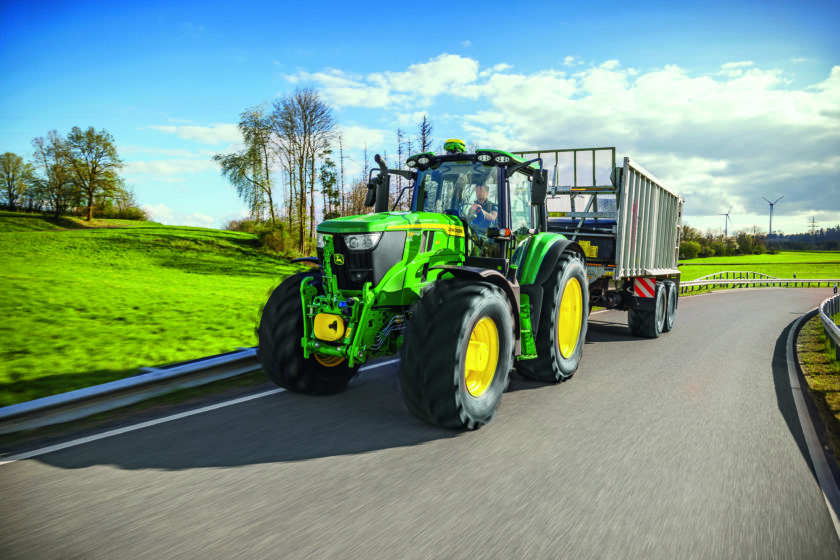
For years, John Deere 6M tractors have been at the top of the market. Last year, two models, the “6120 M” and “6155 M,” topped their respective performance categories, with the former even ranking fourth overall across all tractors, placing it first among multi-purpose models, just behind specialized and compact tractors. When it comes to well-structured farms or large field applications requiring medium-to-high power levels, the 6M series is a preferred choice for Italian agricultural businesses—a staple in the sector that John Deere updated in June to enhance both features and performance and to expand the range.
Appreciated throughout Italy
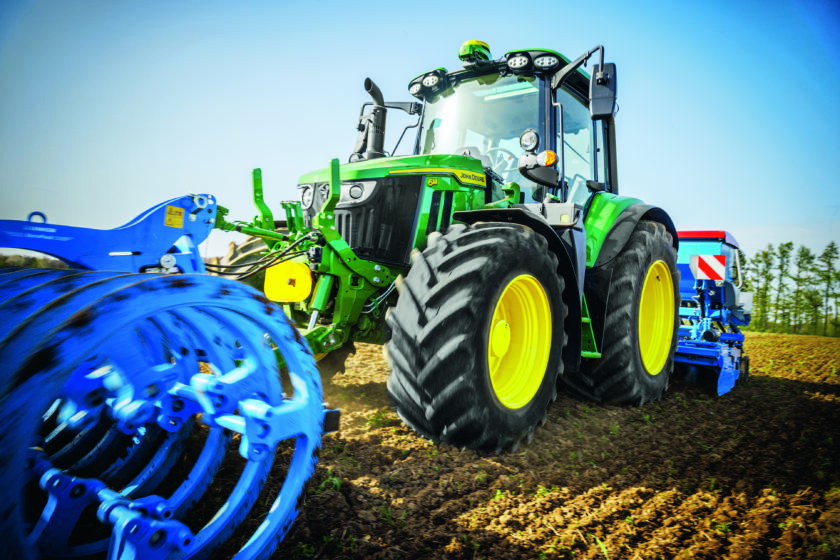
The new 6M family includes 17 different models, covering a maximum power range between 105 and 281 horsepower with “Ipm” (Intelligent Power Management), an option that can provide an additional 6 to 15 horsepower beyond the rated power to handle sudden and unpredictable power demands, depending on the model. Two engine configurations are available, four or six cylinders, mounted on five different frames that yield varying wheelbases, from a minimum of 2,400 mm to a maximum of 2,900 mm on the top model. This offers a wide range of options with nearly continuous gradation in terms of power, size, and weight, as well as hydraulic performance. Pump capacities vary from a minimum of 114 liters/minute up to a maximum of 195, with an optional output of 155 liters/minute. These flows are always managed intelligently, thanks to pressure and flow compensation systems (Pfc) and can be controlled via electronically actuated distributors. Thus, even the largest and heaviest equipment can be easily managed, supported by rear three-point hitches with lifting capacities ranging from 4,350 kg to 9,900 kg, depending on the model.
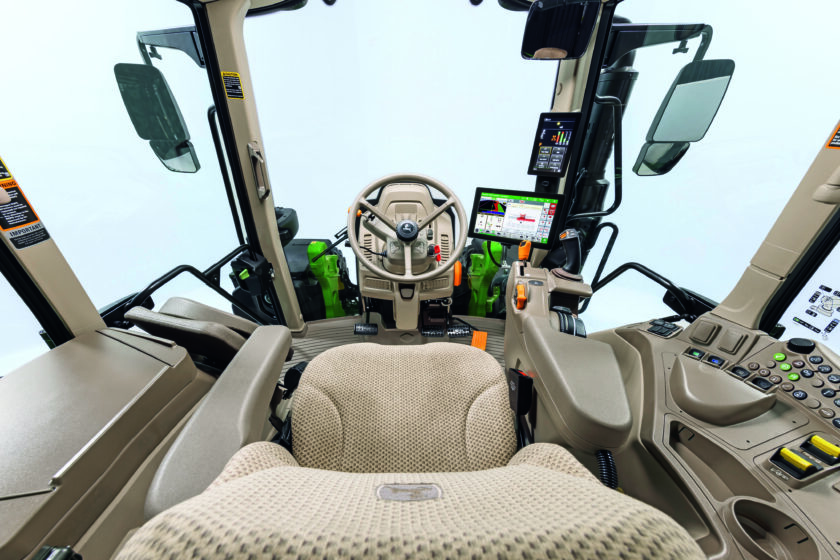
The result is a range capable of meeting a broad array of needs, from open-field work to road transport, from fertilizer and pesticide distribution to on-farm handling, and even suitable for combined work sites. This is made possible by optional front three-point hitches capable of handling loads of up to 4,400 kg and by compatibility with a wide range of John Deere original front loaders. Transmission options further expand the applicability and customization of the new 6M series. Three powershift options are available to deliver power to the ground: “PowrQuad Plus,” “AutoQuad Plus,” and “CommandQuad Plus,” all programmable and featuring high levels of automatic shifting, with advanced configurations providing up to 24 forward and 24 reverse gears.
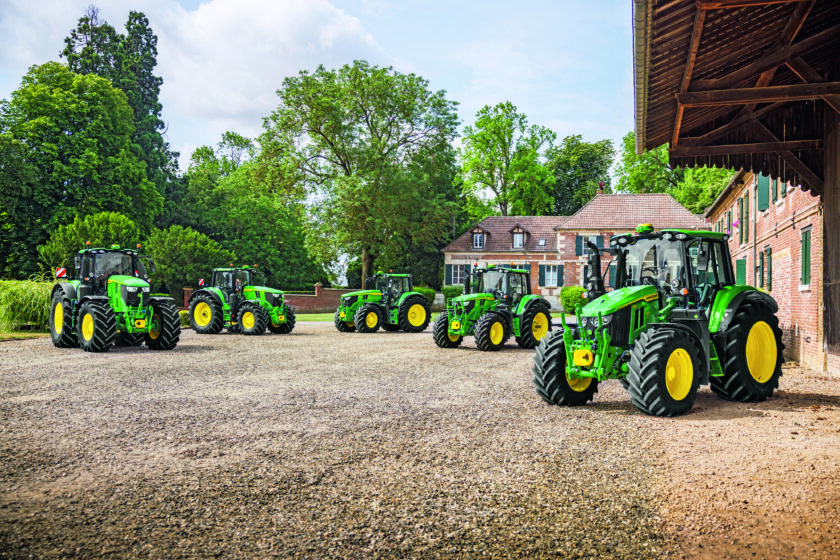
Additionally, the range offers a continuous “AutoPowr” transmission, combining a hydrostatic component with a two-range mechanical gearbox.
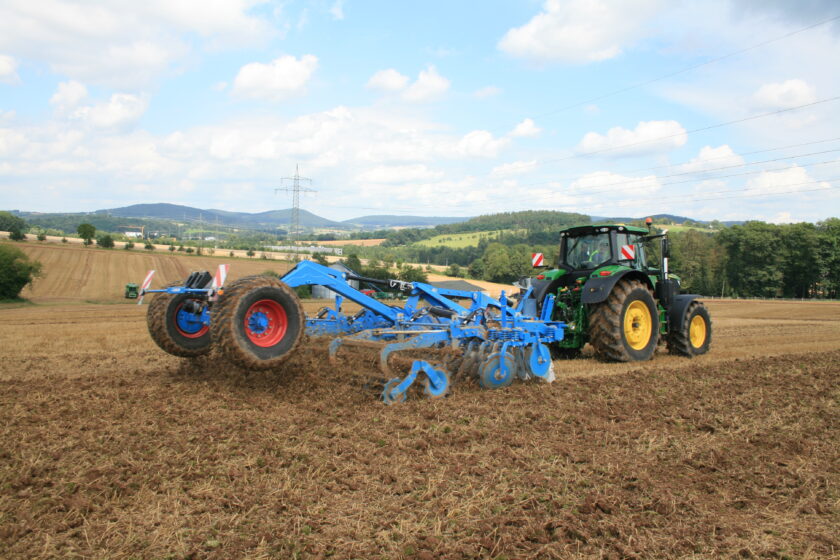
This automatic transmission decouples engine load from travel speed to ensure maximum mechanical efficiency based on the task at hand, allowing travel at 40 km/h at a reduced 1,470 rpm, and up to 50 km/h at approximately 1,850 rpm if permitted by regulations.
An Almost Infinite Choice
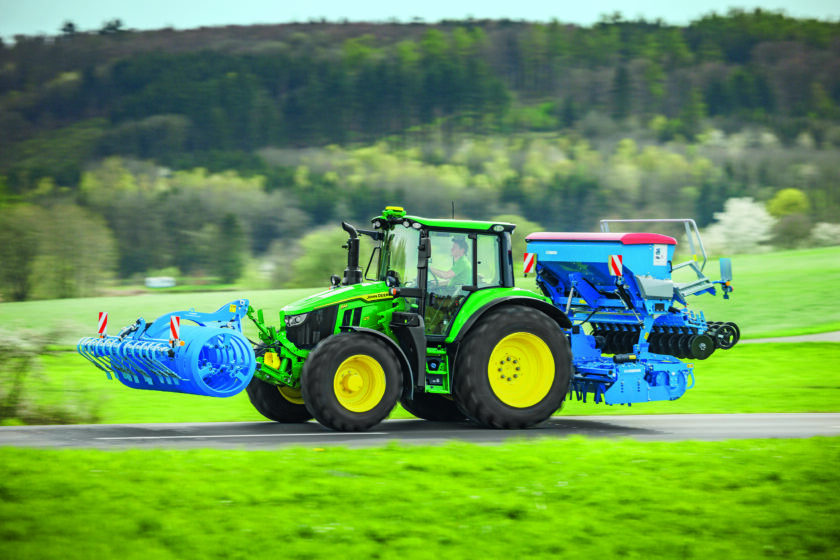
As mentioned in the main text, the new 6M series is built on John Deere’s original engines, featuring 4.5 liters for four-cylinder models and 6.8 liters for six-cylinder models. However, the engine series vary depending on the tractor’s power and wheelbase. “PowerTech Ews” and “PowerTech Pss” engines are used for four-cylinder models, while six-cylinder models are equipped with “PowerTech Pvs” engines and, for the higher-powered models, “PowerTech Pss” engines. The “Short frame” and “Small frame” models meet the power demands of smaller, more versatile tractors with wheelbases of 2,400 mm and 2,580 mm, respectively, with the “Short frame” models excelling in compactness and an excellent weight-to-power ratio. These qualities are particularly offered by models “6M 95,” “6M 105,” “6M 115,” and “6M 125,” with turning radii of only 4.35 meters while delivering maximum outputs of 105, 116, 126, and 138 horsepower, with additional reserves of 12-15 horsepower available if needed.
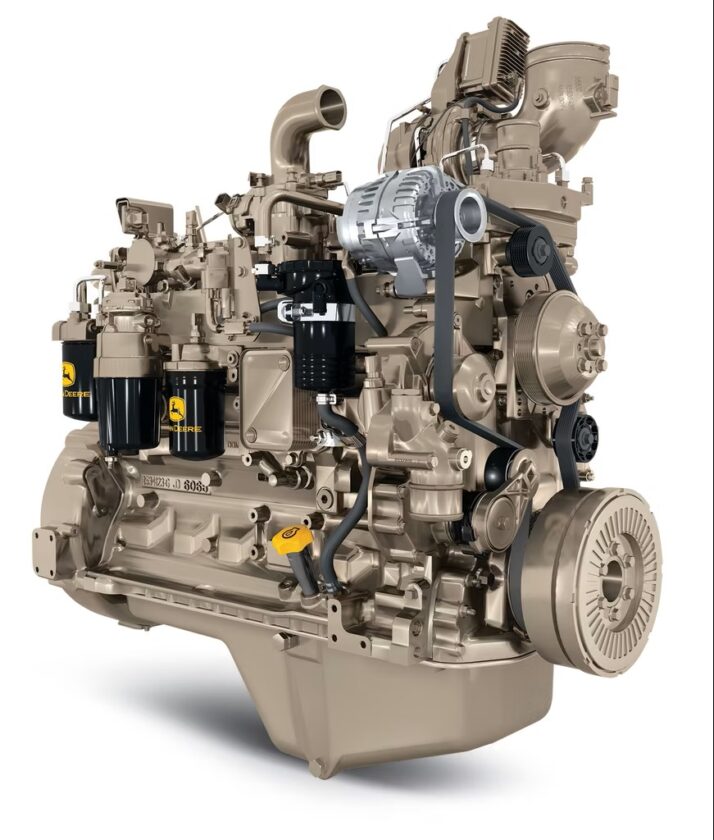
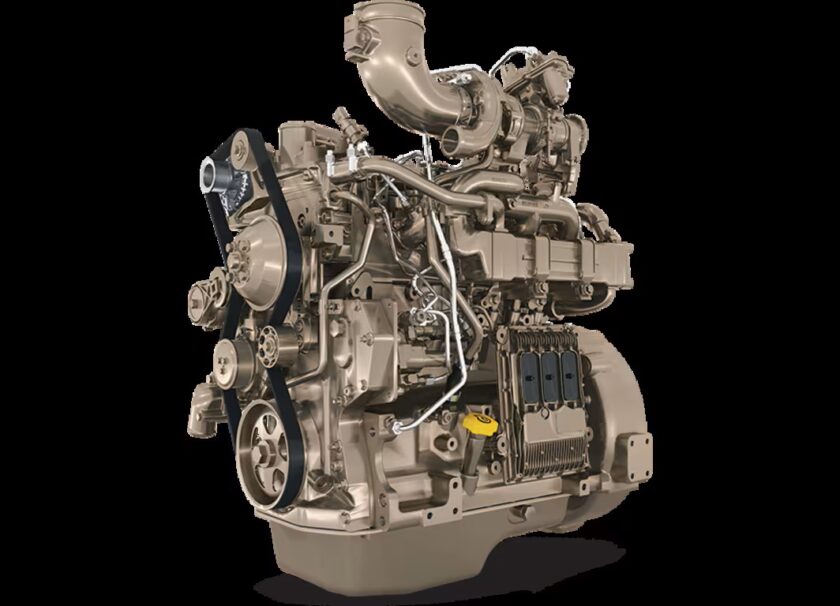
The three “Small Frame” models also offer excellent maneuverability, with maximum power ranging from 143 horsepower on the “6M 130” to 154 horsepower on the “6M 140” and up to 165 horsepower on the “6M 150,” with outputs rising to 156, 166, and 177 in Ipm mode. This final model bridges the gap between four- and six-cylinder tractors, combining the compactness and maneuverability of the former with the power of the latter, overlapping partially with the characteristics of the first “Mid Frame” model, the “6M 145,” with a wheelbase of 2,765 mm. This medium-wheelbase subgroup consists of four tractors, all equipped with six-cylinder “PowerTech Pvs” engines with maximum power starting from 160 horsepower for the base “6M 145” model, rising to 171, 182, and 204 on models “6M 155,” “6M 165,” and “6M 185.” With the Ipm option, their power can be boosted to 171, 182, 192, and 213 horsepower. These versatile machines are suitable for a wide range of field, road, and farm tasks.
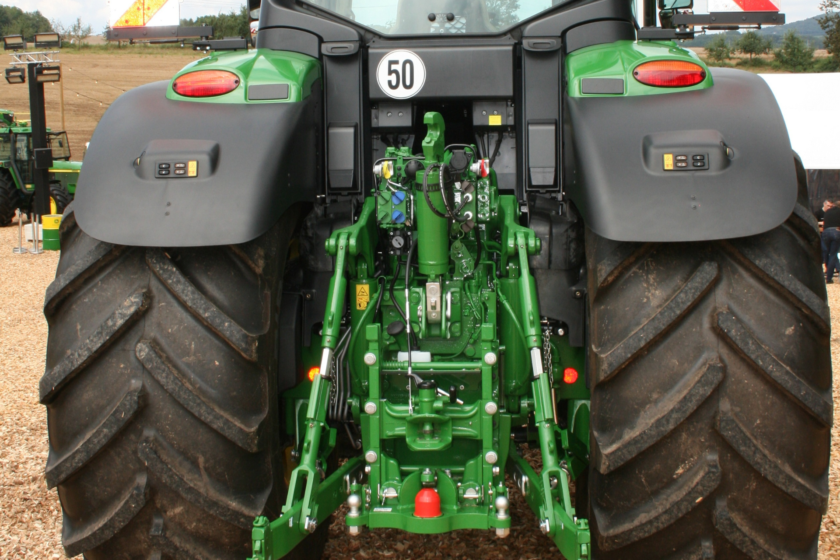
The six higher-powered models in the series, all six-cylinder, are designed primarily for deep soil work and heavy road transport. They are divided into two subgroups based on wheelbase: the “Large Frame” models with a 2,800 mm wheelbase and the “Extra Large Frame” models with a 2,900 mm wheelbase. These subgroups comprise four and two models, respectively, with the “6M 180,” “6M 200,” “6M 220,” and “6M 240” delivering power outputs of 198, 220, 242, and 264 horsepower, which can be increased to 208, 229, 249, and 270 horsepower when needed. The first three power ratings are delivered by the aforementioned “PowerTech Pvs” engines, while the fourth rating is provided by the “PowerTech Pps” engine, equipping John Deere’s newest “Extra Large Frame” models. The first, the “6M 230,” offers 253 horsepower, with an additional seven horsepower in Ipm mode, reaching 260 horsepower, while the “6M 250” reaches a maximum power of 275 horsepower, which increases to 281 horsepower in Ipm mode. Both solutions allow the most demanding field tasks to be performed easily, catering to professional contracting and large agricultural enterprises.
Title: John Deere “6M”, from 120 to 281 horsepower
Translation with ChatGPT





